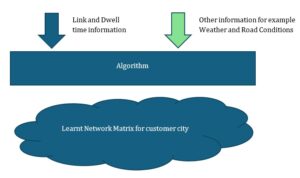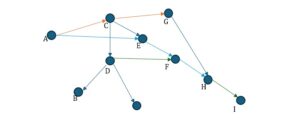Resource Hub
Every Second Counts: Using AI to Predict Travel and Dwell Time
How AI-Powered Forecasting Enhances Reliability and Reduces Delays
Over the past four to five years, Trapeze have been refining our history-based prediction algorithm to elevate it to new levels of precision, further enhancing its predictive capabilities from an already strong position. The algorithm combines short, medium and long-term averages with the timetable, using fixed weighting factors, to derive the prediction.
While reasonably accurate, the system does not automatically determine the weighting of the different factors and does not recognise when something “special” or “out of the ordinary” is happening. In addition, it has not had the capability to recognise trends and make predictions across different bus routes, unless they are travelling along the same corridor.
The emergence of sophisticated neural networks technology and the ability to consume large amounts of data and build inference networks across the data enables a new class of prediction engine to be constructed.
Trapeze has been developing and refining our solution with feedback from our customers around the world and are now in the process of integrating the technology into our leading public transport fleet management solution.
The solution harnesses a learning network, proprietarily developed by Trapeze, to the customers own specific data including the flow of buses across the network and the travel and dwell times, across day and night, 24 hours a day 7 days a week. Over many months of learning, the system builds a picture of the linkages across the network, creating a matrix of responses to different inputs.
The algorithm is common across all systems with the algorithm learning from the data feed to build the appropriate responses to the source data situations. Therefore, the learning is specific to each customer city while the algorithm is common across all customers.

What is the algorithm doing?
The expert system identifies statistical correlations by analysing how current inputs relate to predicted outputs at increasing time intervals into the future. For this we train the system with the recordings of thousands of trips through the network. It’s perhaps obvious that as a bus proceeds along, the timing of that bus now, provides information on the likely timing of a bus following it along the same route. If it is delayed, then the following one is also likely to be delayed.
Now, what the expert system is doing is looking at this spatially and building up a cohort of “when I see this input I am likely to see this output”. This model is built up across all the links between stops.

Figure 1 Simplified Network
The simplified network in Figure 1 illustrates how multiple routes and links feed into each other. Thus, if there is a delay along the link F – H, a delay to all routes passing through these points is to be expected.
Where the expert system comes in, is looking at how these queues develop over time and building a model of input travel information to how in the future the travel times will be adjusted.
As a result, if for example the expert system sees a trend showcasing that when there is a queue on the G – H link an additional delay on the E – F – H link will build up a few minutes later, it can incorporate this into the prediction output, before the link has actually started to slow.
The model does not understand anything about the vehicles, or the network itself, only the nodes, the links and the actual input information and the statistical relationship it has learnt through the training.
Let us imagine that there are roadworks at the node H. Initially the prediction algorithm will know nothing about this, it will see the impact on the travel time, and during that day it will make predictions and update its learnt model, the short term view “these links have increased delay”.
Overnight the system is retrained on all the data collected during the day, and the model is updated to reflect that a small delay quickly grows into a larger delay. Over night during the retraining of the complete set with the day’s events, the new pattern will be recognised and integrated into the model. Thus, the following morning, if the small increase in travel time is seen, the model will incorporate this and the likely consequences for the travel times later in the day. If, however, there is no delay seen, then the model will continue to output the original travel times.
Thus, over time, the system will build a statistical picture of “if we see this” then “this is likely to happen”.
The model is trained on the travel times as well as the dwell times the periods when the bus stops to load and unload passengers.
During the course of the day, this dwell time will also change, with the same pattern recognition used to build a model of these changes. It will also look for correlations, in much the same way as outlined for the queues. If for example, a particular route is delayed, then perhaps there is a statistically meaningful movement of passengers to a different stop and route.
In some cities there is a significant impact on the dwell time caused by different situations, while in other cities the impact might not be as pronounced. Since dwell time is effectively the time taken for passengers at stop to either alight or board, the dwell time is an indication of the number of passengers exchanging at each stop, and where there is significant differences, this is likely to be due to flow patterns though out the day, while a relatively stable value indicates a steady level of passengers. However, from the perspective of the learning system, it is simply data that can be used in the prediction.
The expert system can also be extended to look at other factors. For example, having a feed on the macro weather will increase the information available. This can then be correlated to the impact on the travel and dwell times. At present, while the feeds have been integrated into the development systems for analysis, no specific conclusions on the usefulness of this information have been drawn.
In this first article we have looked at the principles being harnessed to calculate predictions. Look out for future articles where we will look at actual performance as well as other information feeds and how these systems are being introduced to our customers.
Articles
Why Adopting Open Standards in Public Transport Matters: Key Benefits Explained
Open standards help future-proof public transport systems, making them more adaptable to evolving needs and sustainable transport network.
Mode of Transport
Public Transport Authorities, Bus
Solutions
Intelligent Transport Systems